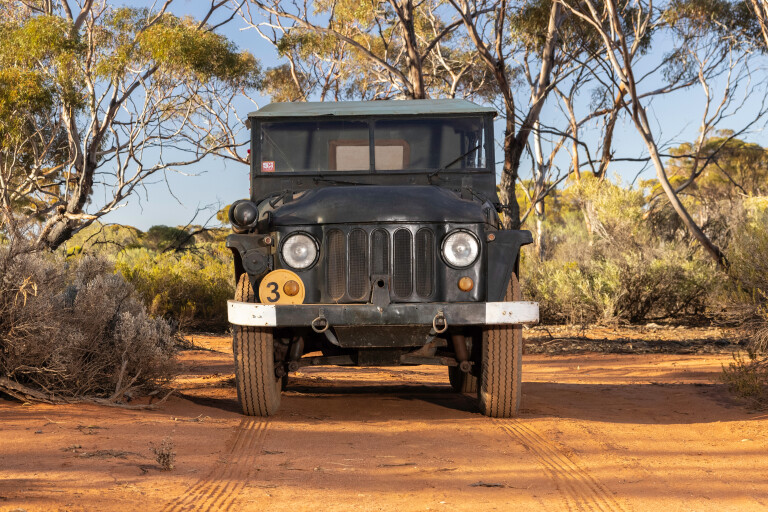
Let's face it, not everyone with a newly minted licence is an excellent driver. It’s a fair bet there are going to be a few bumps and scrapes along the way to seniority too. Couple that with a less than an ideal war-chest for a budget and your choices on what is suitable dwindles considerably. Back in 1979 when pieces of Skylab peppered the south of Western Australia, and the dystopian world of Mad Max was a possible future for impressionable youth, Martin Hayes set out for his first set of wheels. Something cheap, quirky and able to take a punch, but keep on keeping on was his mission. As it turned out, Martin’s brother had a fetish for the Brit-built Austin Champ, having already captured one of his own, and he had a spare military-spec 1952 model he was willing to move on.
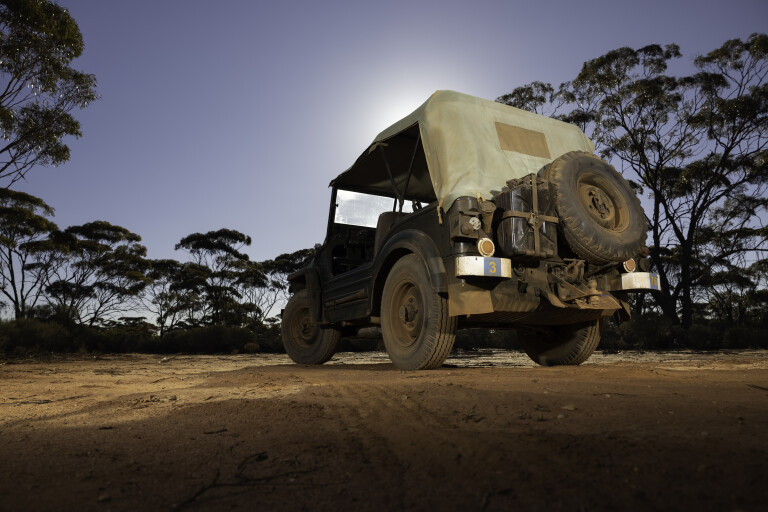
“Around 1978, my brother got on to Champs,” Martin related. “The family fell in love with them, and with Land Rovers breaking axles and such, I wanted one too.
“He bought mine off a farm in Victoria, with the story going the original owner had died, and his kids knew about the Champ but they didn’t know where it was. In the end they were pulling apart the farm’s old hay shed and under all the hay was the long-lost Champ, and in pristine condition too! They are three-skinned, so they can get a lot of rust, but it was in the same condition as you see it now.”
Champs were well-known for requiring a rigorous and regular servicing schedule, so it was no wonder when they found it the engine had seized after having sat for so long. A new set of Holden pistons was thrown in and the little war-rig returned to service. “I bought it off my brother the next year for about $400, and it was my first car,” said Martin.
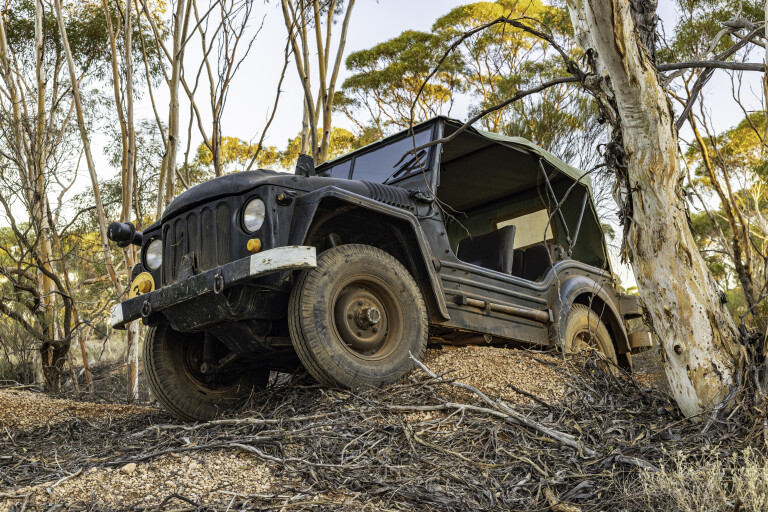
War footing
Being built to operate in all theatres of war throughout the world, getting Martin to where he wanted to go was easy work.
“It’s like a family pet, we take it everywhere,” he says. “That Champ has been across the Simpson Desert French Line, when it was hard. We used to take it to Innamincka every holidays, partly because we’d want to find a spot to drive the Cooper Creek.
“They were designed to go through 6 feet 6 inches (1981mm) of water,” Martin explained. “There’s a few things you have to do, so you can’t just drive straight in. Like lift the snorkel (off the front guard) and pack your dipstick full of grease. In the actual army magazine they tell you (when driving fully submersed) to pull the hand throttle out to full revs (3800rpm), put your right knee on the seat, left foot on the clutch and use first low, and go.”
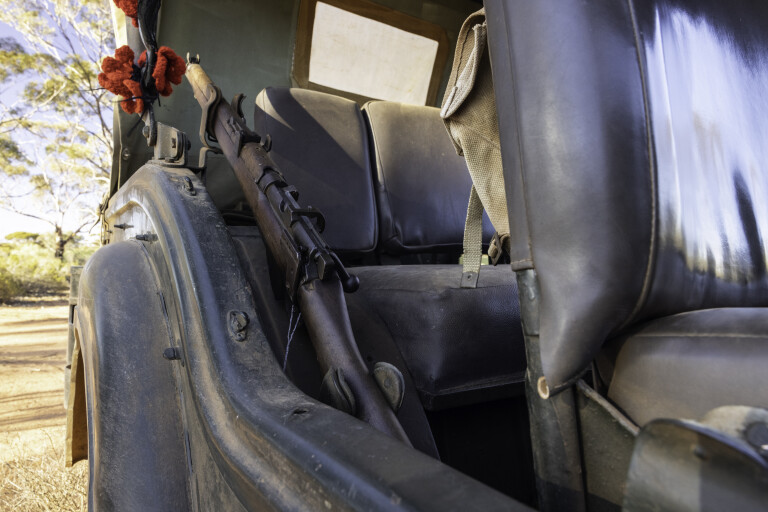
Looking closely over Martin’s example, there’s solid evidence this Austin was built for military service, and not a civilian edition. Alongside each of the four seats are a pair of U-shaped brackets, designed to take a serviceman’s rifle. Casting an eye below the dash on the passenger side are a pair of cowl supports, with a round cap placed over a hole in the cowl directly above them. This grommet, once removed, allowed a pintle mounted .303 Vickers, or Bren light machine gun to be fitted. Because the front windscreen can be either lifted up or laid down over the bonnet, firing from the passenger seat while mobile is possible.
Battle grade
In military terms, the “Truck, 1/4 ton, CT (CombaT), 4×4, Cargo & FFW (Fitted For Radio), Austin Mk.1” (only later civilian versions were referred to as the Champ) began when the British government tendered for designs to build a British-built all-terrain vehicle capable of competing with the Willys MB ‘Jeep’. A total of 15,000 units were commissioned, but in the end the complex design and high cost saw the undertaking cease, some 4000 units short of fulfilling the order. With the simpler Land Rover Series 1 taking over for military service.

In terms of technology, however, it was way ahead of its time and competition. Compared to the Willys, the Champ looked like a rock star on paper. It sported four-wheel independent double-wishbone suspension, controlled by longitudinal torsion bars and a cone-and-cup bump-stop system.
A five-speed synchromesh transmission was standard with an integrated transfer case in the rear differential assembly. This gave the Champ five gears moving forwards, but also five in reverse. When four-wheel drive was required, the engagement of a dog clutch using the lever on the passenger side of the transmission tunnel drove power from the rear to the front differential via a full-length tail-shaft. Both front and rear diff assemblies were contained within separate cradles, making replacement in the field a far easier task too.

Rolls-Royce power
While the Champs were fitted with the 1938-designed B40 2838cc Rolls-Royce petrol engine, due to cost and complexity, and a changing over to Unified Thread standards (from BSF – British Standard Fine) in 1949, the later power plants used a cast iron head (not aluminium) and UNF bolt-ware. These engines can be identified with the letters UNF stamped on the rocker cover.
To reduce the pressure on Rolls-Royce to produce enough engines to keep up with the production contract, Austin was granted a license to produce a very similar engine to the Rolls-Royce power plant, with cylinder blocks for both manufacturers coming from Leyland Motors.
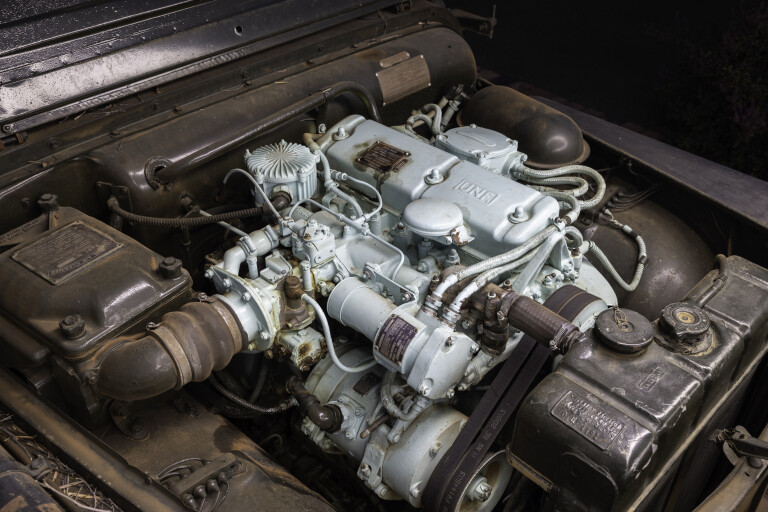
While the original design of the B40 engine called for reliability over fuel economy, the Champ was fitted with a 20 gallon (91L) fuel tank. This was reportedly able to achieve around a 480km range.
Working the line
Nowadays Martin and his Champ are stationed in Kalgoorlie, Western Australia, with the little 1⁄4-tonne truck making short work of the surrounding scrub. Being a keen ‘wood-liner’ has taken Martin along the long-gone skinny-gauge railway systems that surrounded the goldfields. These lines were laid to bring back wood to power the huge stationary steam engines driving the gold batteries and winches that dragged men and gold up from the depths of the Kalgoorlie and Coolgardie mines.
Wood-line work crews at the time left their spent supplies where they used them. So armed with the Champ and a paper map, Martin has conducted multiple reconnaissance missions through the overgrown and roadless bush, amassing an impressive collection of antique bottles and camping equipment from as far back as the early 1800s – but also showing just how capable the Champ is where there really are no roads.

Having been in his corner for more than 40 years, the Champ has weathered it all well. With quite a few ANZAC parades under its belt, it’s a stoic reminder of how good British engineering could be.

COMMENTS